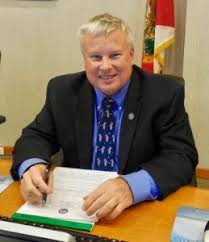Dale Martin
City Manager
Fernandina Beach
April 12, 2019 12:00 p.m.

As the calendar turns to April, City staff will begin to prepare next year’s budget. For a brief refresher, the City’s fiscal year runs from October 1 to the following September 30. This calendar mirrors the federal fiscal year, but the State operates differently with a July 1 through June 30 fiscal year.
The budget process in Fernandina Beach is straightforward, ultimately resting at the hands of the City Commissioners. Unlike the previously described New England town meetings and town referendums that I worked with in Connecticut, the first two budgets that I presented to the City Commission were relatively low-key affairs: minimal participation at the two required public hearings.
Last year’s budget provided more interaction. First, the City Commission rejected an initial proposal to maintain the same millage rate (6.0000 mills), making use of the resulting additional revenue (approximately $300,000) for conservation purposes. To maintain the same millage rate required unanimous consent of the City Commission, and the proposal was rejected by a 3-2 vote. The tax rate was subsequently set at a slightly lower rate (5.8553).
The City Commission was next confronted with the decision on what to allocate a portion of Parks and Recreation impact fees: for conservation purposes or for the construction of additional pickleball courts. The Commission Chambers were packed, and speakers from both sides appealed to the City Commissioners to support their cause. In the end, the Great Pickleball War of 2018 was won by the pickleball advocates with a 4-1 City Commission vote. The final uncertainty of the 2018-2019 budget was resolved, and the budget was adopted.
So we now prepare for the 2019-2020 budget. The process begins with a relatively informal staff kick-off meeting. Forms are distributed to department directors and applications for funding requests are provided to nonprofit agencies seeking City financial support (over $100,000 was distributed to area nonprofits this year). Initial budget requests, including proposed capital improvement projects, are due to Ms. Testagrose, City Comptroller, by May 1 (as are nonprofit applications).
Throughout May, Ms. Testagrose and I will review the requests, meeting with department directors individually. This year, a Capital Improvements Committee will review capital improvement requests and present a five-year capital improvement plan to the Planning Advisory Board, which will review and provide a recommendation to the City Commission.
In June, Ms. Testagrose and I will meet individually with City Commissioners to review the draft budget. We will review potential and proposed projects, share the impact of the proposed budget on the millage rate, and seek additional direction from the City Commissioners with regard to projects that may not have been considered previously by City staff. We will generally gauge what level of support the City Commissioners have for the draft budget.
In July, with the support of the Nassau County Property Appraiser and his staff, the City receives several financial documents that are critically important to establishing the City’s millage rate (or tax levy). These detailed documents indicate the City’s aggregate taxable property value and what is called the “rollback rate.” The rollback rate represents the millage level to be set to generate approximately the same amount of revenue generated by property taxes in the previous year. It’s a process that attempts to link rising property values with reduced tax rates.
What is further important about the relationship between the rollback rate and the budget is the level of support needed for proposed millage rates. If the City Commission wishes to set the millage rate at the rollback rate, a simple majority (three votes) is needed to approve the budget. Higher millage rates require greater City Commission support, including thresholds for four votes or a unanimous five votes. As described earlier, it was due to exceeding the rollback threshold that the effort to maintain the same millage rate from last year to this year required a unanimous vote (and failed). The millage rate of 5.5883 that was eventually levied is the highest rate possible that required only four City Commissioner votes (the budget was, however, unanimously adopted by the City Commission).
In early July, I am scheduled to present the proposed budget to the City Commission. Budget workshops are scheduled, as needed, throughout August, and, after two public hearings in September, the budget is scheduled for final approval at the second meeting in September. Shortly thereafter, the adopted budget is implemented with the October 1 start of the fiscal year.
I look forward to sharing the progress of the budget development with you over the course of the next several months.
